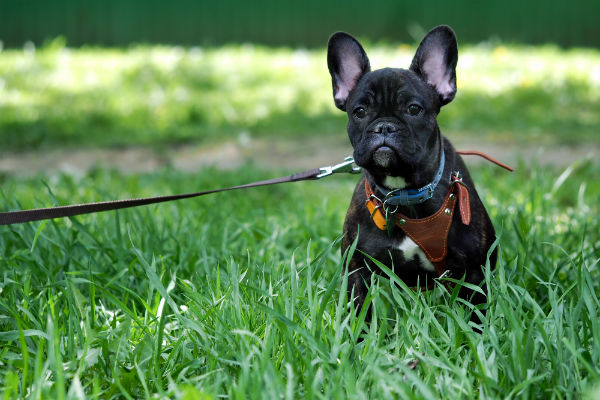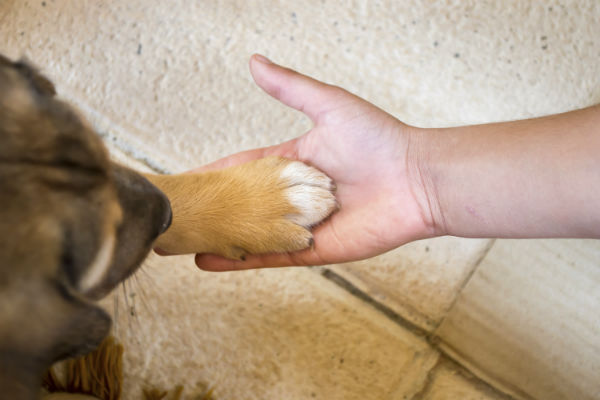Puppies present a variety of challenges as they develop. First, they’re sweet babies, following us around, looking to us for every cue. Then, just when you think you’ve got a handle on house-training, basic obedience commands, and confidence building (in both of you), baby teeth and brains seem to go right out the window, simultaneously.
You may feel that’s suddenly a fitting description of your puppy’s intellectual prowess. You’re getting through this strange shift, when just as suddenly you are in a standoff with a cocky, unnerving, aggravating, outrageous teenager.
Don’t lose heart; these phases will pass. The more you persevere with socialization, training exercises, patience, and consistency, the faster you both will overcome the sometimes taxing stages of puppy development.


Teaching Your Puppy to Learn
As soon as they arrive in their homes, puppies need to be taught the boundaries and rules of their new social order. Since a puppy must be taught how to learn, it is very important that he learn the right things to form good habits, rather than learning bad habits that later must be corrected. If there is anything you do not want your adult dogs to do, then do not let them do it as puppies. This might include jumping on people, getting on the furniture, begging at the table, or pulling on a leash. Teach him correctly, so you aren’t faced with the harder task of changing bad behavior later.
At around four months old, puppies enter the age of independence, when they may start testing the dominance and leadership of their owners. Be warned: Temper tantrums are common. You cannot win an argument with a teenager or a dog, so it will be your job to figure out how to be smarter than they are and train and teach around the issues.
This is a critical period of learning, and no matter which school of dog training you follow, you must come out on top or you may never have the well-behaved dog you want and expect. The essentials a puppy should learn are: no biting, no dominating children or other pets, and no resisting the necessities such as having nails trimmed, being groomed, leash training,, vet exams, ear care, or the removal of possessions or food. It also includes learning to come when called.
This is the time when puppy classes are essential. Your veterinarian, the Internet, or even sometimes your breeder may tell you not to take the puppy out until he completes all of his vaccinations. If you do that, however, the puppy may miss out on vital socialization opportunities. Chances are slim that a puppy will get sick if he hasn’t had all of his shots. A healthy dog that is unsure, disagreeable, or unable to cope because we protected him from too many of life’s risks has a good chance of ending up in a shelter.
At this age puppies need to experience other puppies of different breeds, sizes, and temperaments; they need to learn the difference between play and work; and they need to be handled, trained, and disciplined by a variety of people.
Exposure to various environments helps build self-confidence, but use common sense. Make sure that any potential puppy classes take place in a clean facility that meets proper health and safety requirements, and that you and your breeder are comfortable with the training methods to be employed.
Don’t take your puppy to a dog park, since you have no way of knowing about the health and behaviors of the other dogs there.
You may find good opportunities for socializing your puppy by taking him to places such as Lowe’s, Petco, or other pet-friendly businesses. After immunization is completed, I like to take my puppies to middle school sporting events, where there are lots of people, noise, confusion, and dog-loving teenagers.
Conditioning for Trust
Mental conditioning is a very important part of growing up. Teach your puppy to trust you by being trustworthy. If we ask puppies to do things that they are unprepared for or unable to do, we are teaching them to fail instead of to succeed. The more your puppy fails, the less he will trust your instruction and expectations. Remember, you and your puppy are a team in this growing-up process. Try to make sure every little developmental step is taken with success, so the puppy learns to trust your judgment throughout his life.
Don’t “Baby” Your Puppy
Don’t do anything for your puppy that you can teach him to do for himself. The more we do for our puppies, the less they learn, and the less confidence they build. So instead of picking him up to put him in the car, teach him how to put his front feet up on the edge and then boost him and say what a great, smart puppy he is. We must give them opportunities to learn to think for themselves.
Mental conditioning is of paramount importance during fear stages or at times of minor injuries. Never console a puppy that is afraid or mildly injured. One of the biggest mistakes owners make is to use the phrase “it’s OK.” It is also one of the hardest habits to break, as that is the phrase we use with our children. Children have the ability to understand that we are talking about a situation (i.e., “everything is going to be OK”); our dogs think we are talking about their behavior (i.e., “it’s OK that you’re cowering –- well done, you”). In essence, then, we are reinforcing fearful or traumatic behavior instead of helping our puppies work past the fear or injury. Try using the phrase “you can do this” or “you can be brave.” When they recover, offer plenty of praise.
The more you invest in teaching your puppy to learn and in mental conditioning, the happier and more confident you both will be in the lifetime you will share together from here on out.
Pat Hastings has been involved in the dog world since 1959. With her husband, Bob, she developed the structural evaluation process detailed in their highly acclaimed Puppy Puzzle DVD. Erin Ann Rouse is her writing partner.




